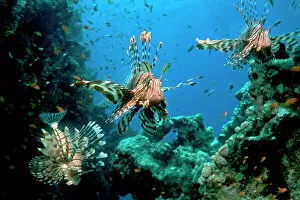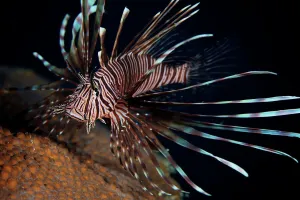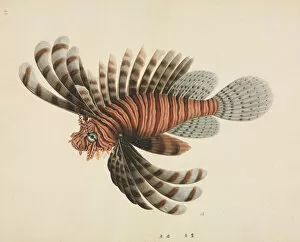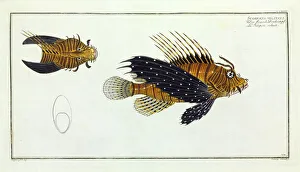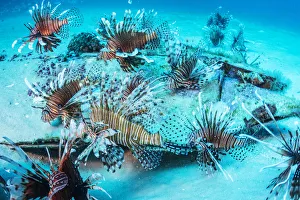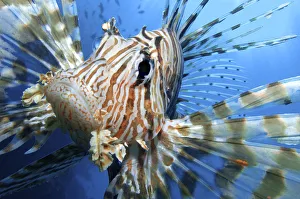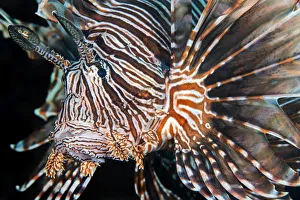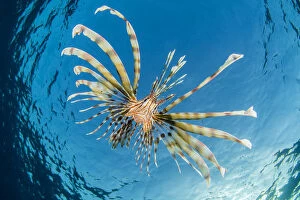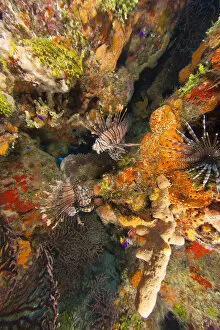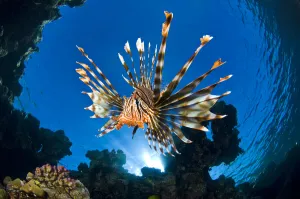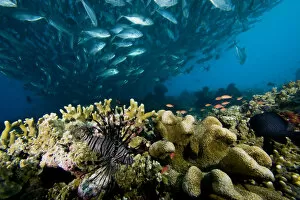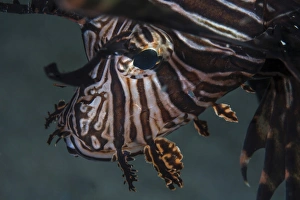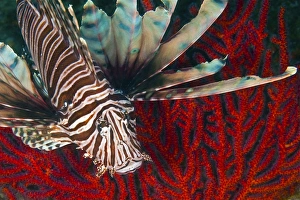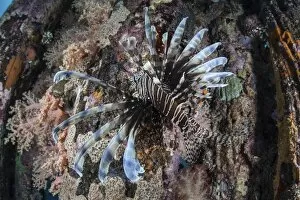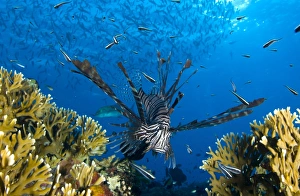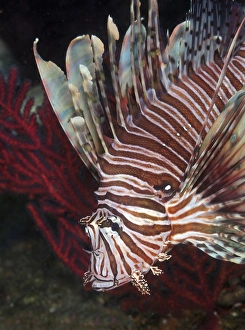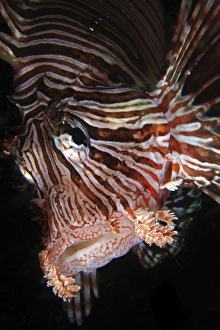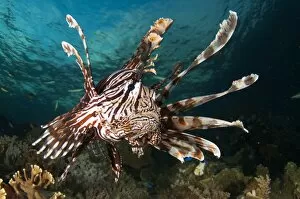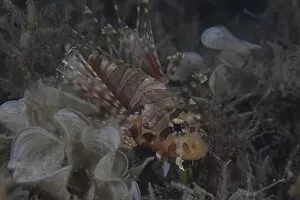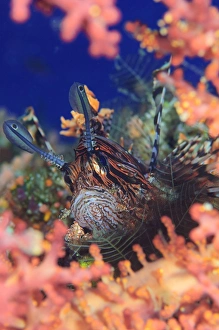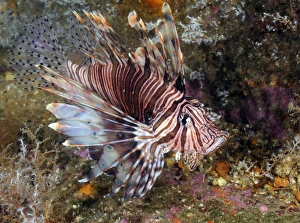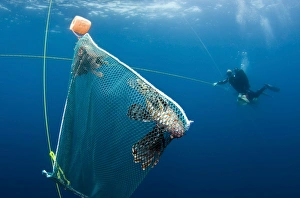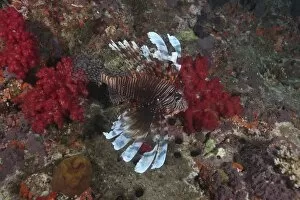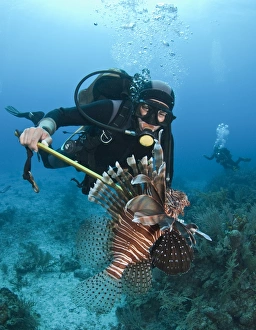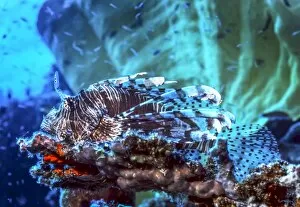Pterois Volitans Collection
The mesmerizing beauty of the pterois volitans, commonly known as the Lionfish, is undeniable
All Professionally Made to Order for Quick Shipping
The mesmerizing beauty of the pterois volitans, commonly known as the Lionfish, is undeniable. With its vibrant colors and intricate patterns, it effortlessly blends into the colorful tapestry of a reef. But behind this captivating facade lies a deadly predator. The Red Lionfish flares its spines in warning, showcasing its formidable defense mechanism. This species, scientifically referred to as Scorpaena volitans (Pterois volitans), has become notorious for being an invasive threat to native marine life. In many regions around the world, these Lionfish have taken over reefs with alarming speed, wreaking havoc on local ecosystems. Their voracious appetite knows no bounds as they indiscriminately prey on smaller fish and crustaceans. One can spot these invasive creatures patrolling the edges of stunning dive sites like Suzie's Bommie near Port Moresby in Papua New Guinea or swimming gracefully under coral ledges in Palau. Their presence is a constant reminder of the delicate balance between nature's wonders and human interference. A close-up portrait reveals the fierce determination in their eyes as they navigate through their new territories. In places like the Caribbean, where they have established themselves as an invasive species, efforts are being made to control their population and minimize their impact on local biodiversity. Young lionfish can be seen near the water's surface at dusk when they hunt silversides with remarkable agility, and is during these moments that one witnesses both their gracefulness and potential danger up close. As we marvel at their beauty from afar or encounter them underwater during our dives, let us not forget that pterois volitans serves as a stark reminder of humanity's role in shaping our environment – both positively and negatively.


